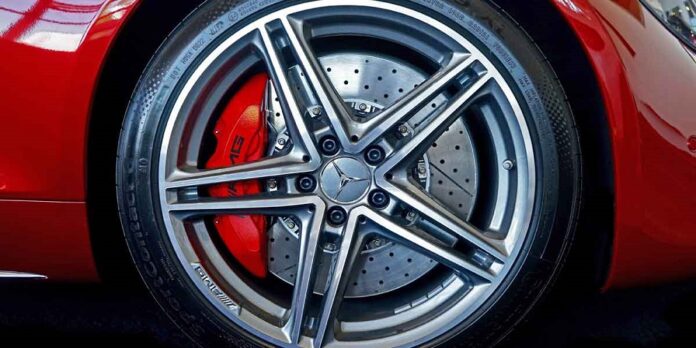Modern braking systems must have disc brake calipers as a fundamental system part. By creating friction on the rotors, these devices assist in slowing down and stopping a vehicle. This article will examine the brake caliper, its components, and its operation in more detail.
What is a Brake Caliper?
A disc brake system’s brake caliper is an essential component. It essentially acts as a hydraulic clamp, pressing the brake pads against the rotor to create friction that slows down the car. The hydraulic hoses and brake lines used to connect the brake caliper to the master cylinder are mounted on the brake rotor.
Types of Brake Calipers
Brake calipers come in two basic varieties: fixed and floating.
Fixed Calipers
On the other hand, fixed calipers have pistons on either side of the rotor. Better stopping power and more exact control over the braking force are provided by this design. Additionally, fixed calipers move less laterally, contributing to less brake pad wear and longer service life.
Floating Calipers
Sliding calipers are another name for floating calipers. Only one side of the caliper assembly has pistons, and guide pins allow the entire assembly to move laterally. Because of their simple and reliable pad-to-rotor contact, they are a popular option for many contemporary vehicles.
Components of a Brake Caliper
Several parts make up a brake caliper, including:
- Pistons: Pistons are in charge of exerting force on the brake pads and causing friction with the rotor.
- Brake pads: The high-friction material used in brake pads cause them to clamp down on the rotor when the brakes are applied.
- Seals: These stop brake fluid from escaping the caliper.
- Guide Pins: The caliper can move laterally with the help of guide pins, which also help to keep the pressure on the brake pads uniform.
- Bleeder Screw: This removes air bubbles from the brake system during maintenance.
- Brake Caliper Bracket: This holds the caliper in place and permits it to move when the brakes are applied.
How a Brake Caliper Works
Hydraulic fluid is transmitted from the master cylinder to the brake caliper when the brake pedal is depressed. The fluid pushes the brake pads against the rotor by forcing the piston(s) in the caliper. This causes friction and causes the vehicle to slow down. When the brakes are applied and released, the fluid is pumped back into the master cylinder, and the piston(s) retract, relieving the brake pads of pressure.
Advantages of Disc Brake Calipers
Disc brake calipers have several benefits over conventional drum brakes, such as:
- Better Stopping Power
Disc brakes are common for high-performance vehicles because they produce more friction and offer better stopping power than drum brakes.
Less Fade
Disc brakes dissipate heat more efficiently than drum brakes, which lowers the possibility of brake fade during extended use.
Easy Maintenance
Because they are more accessible and have fewer parts than drum brakes, disc brake calipers are typically simpler to maintain.
Longer Service Life
Disc brakes are built more robustly and resistant to wear and tear, typically lasting longer than drum brakes.
Conclusion
A disc brake system’s operation depends heavily on the brake calipers. They are responsible for causing friction, slowing the car down, and ensuring a secure driving experience. You can choose how to maintain and improve your braking system if you know the various brake caliper types, their parts, and how they function.










